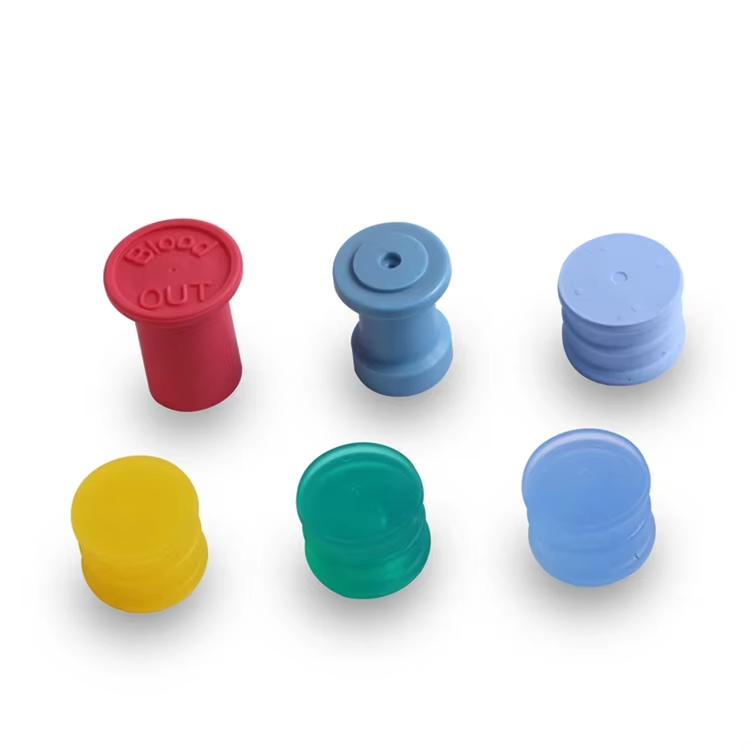It's important to know that rubber stoppers don’t seem really important but if you ask someone who works in a lab or messy place? They will tell you. That those tiny plugs? Are more useful than they look. They’re not just for displays anymore, they don’t beep or blink but they do help. And also they seal things tight, and they stop leaks, and they also keep dust and bad air out. It doesn’t matter if you’re mixing stuff in a school lab or working in a messy factory. Rubber stoppers do really help not that just they’re kinda soft, so they can also grab stuff tight. It's not stop that, they're also firm, so they don’t squish too easy. It’s just like they guard your glass stuff and if you pick the right one? You won’t have to worry about spills, messes, or getting stuff dirty.
Essential Lab Uses: Test Tubes, Flasks, and More
Another thing is you’ll see rubber stoppers all over the lab table. Some look old or dirty, but hey, they’re always nearby. They’re stuck into test tubes and flasks and also hold stuff in or stop it from disappearing. If you ever heat weird stuff in a test tube, you know a stopper with a small hole for a thermometer or tube helps a lot. And if you work with bio stuff? You’ll probably use one to seal up something gross and keep it clean.
Don't you know in high college, we grew bacteria in sealed test tubes, not glamorous, but a good day it worked. And chemists doing titration, distillation, or just trying no longer to breathe toxic fumes? Yep, equal stoppers. They stretch to fit most lab stuff. That’s good, because no one wants to stop and measure glass during an experiment.
And it’s not rocket science but picking the wrong size or material can mess everything up. Too tight? It breaks. Too loose? It leaks. Some melt with heat. Others get sticky with certain stuff. So even if it sounds boring, choosing the right one always matters.
[Picture idea: Rubber stoppers in various sizes on test tubes and flasks in a lab setting.]
Heat and Chemical Resistance in Harsh Environments
Here is the thing, some stoppers just chill and others get wrecked. Doing crazy stuff? Don’t use the old cheap ones, you need silicone or butyl because silicone can take heat up to 200°C without melting. That’s good when you’re heating stinky or risky stuff. Butyl? That one’s good when the chemicals go crazy, it won’t puff up or fall apart like regular rubber. And if you’re in a factory with oils or weird stuff, nitrile stoppers can handle the beating.
Imagine sealing meds in a pharma lab, you don’t want the rubber messing things up or falling apart when you clean it. Or worse, picture a chemical plant using a stopper that breaks in the middle of work. It’s not just messy, it also can be dangerous. That said picking the right material isn’t just “nice” it’s always important.
[Picture idea: Close-up of a rubber stopper next to chemical containers and a lab heating setup.]
Summary: Why Rubber Stoppers Remain Essential
Bottom line, we’ve got fancy lab stuff now, but guess what’s still on almost every shelf? What else? Of course it is rubber stoppers. Not only they still work, they also seal what needs sealinghe and they don’t melt or freak out with heat or chemicals they’re also super cheap. Yes they’re boring, they’re basic, but when things go wrong? They’re usually what saved the day. Whether you’re in a fancy lab or school chem class, the right stopper means less mess, less panic, and more time doing what you’re supposed to do. So yeah, they don’t get much attention but they’ve earned their spot.

 EN
EN
 CN
CN
 AR
AR
 HR
HR
 CS
CS
 DA
DA
 NL
NL
 FI
FI
 FR
FR
 DE
DE
 EL
EL
 IT
IT
 JA
JA
 KO
KO
 NO
NO
 PL
PL
 PT
PT
 RO
RO
 RU
RU
 ES
ES
 SV
SV
 IW
IW
 ID
ID
 LV
LV
 SR
SR
 UK
UK
 VI
VI
 ET
ET
 HU
HU
 TH
TH
 TR
TR
 FA
FA
 AF
AF
 MS
MS
 GA
GA
 CY
CY
 MK
MK
 KA
KA
 UR
UR
 BN
BN
 MN
MN

